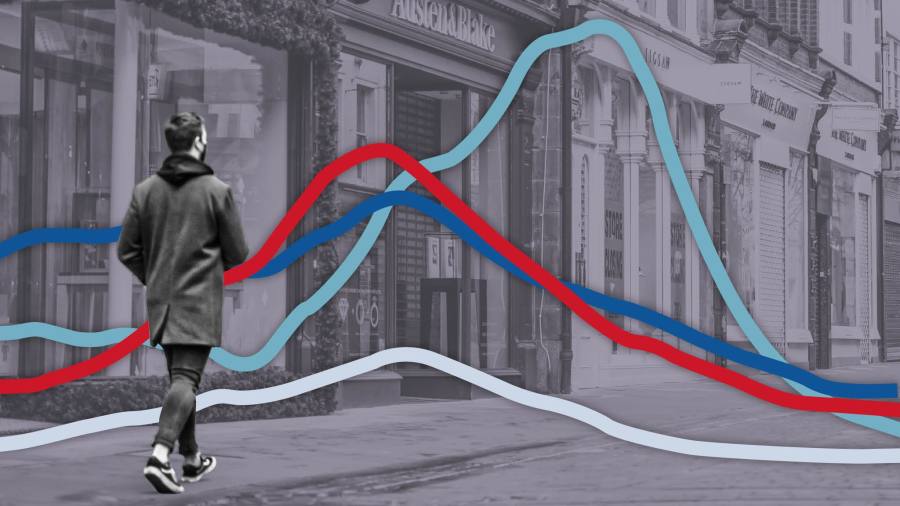[ad_1]
A drop in US government bond prices continued to weigh on global debt markets on Thursday as investors anticipate a rise in inflation stemming from the recovery from the coronavirus pandemic.
With values sinking, the yield on the US 10-year benchmark bond rose 0.06 percentage points to a high of 1.4372 per cent, around its highest in a year, despite Federal Reserve chairman Jay Powell on Wednesday downplaying the threat of a jump in prices, pointing to slack in the US labour market.
Inflation expectations in the US, derived from the prices of inflation-protected government securities, are running at just under 2.2 per cent as president Joe Biden attempts to get his $1.9tn coronavirus stimulus bill through Congress.
The yield on the comparable Australian government bond climbed 0.12 percentage points to 1.76 per cent, its highest since May 2019, even though Reserve Bank of Australia governor Philip Lowe has said he does not foresee an interest rate rise until at least 2024.
Germany’s 10-year Bund yield added 0.03 percentage points to minus 0.28 per cent and the yield on Britain’s 10-year gilt jumped by 0.05 percentage points to 0.78 per cent.
“The main theme in markets is reflation,†said Gregory Perdon, co-chief investment officer of private bank Arbuthnot Latham. “This causes bonds to sell off because if you believe inflation is heading towards 2 per cent, there is no reason to own a bond that yields less than this.â€
Bond yields have risen rapidly since January, when the Democratic party won control of the Senate in January, bolstering Biden’s chances of spending heavily on economic stimulus.
Bets on price rises for basic goods have supported some stocks heavily weighted towards old economy businesses at the expense of the faster-growing technology sector. Europe’s Stoxx 600 index, which opened 0.3 per cent higher on Thursday, has risen almost 5 per cent so far in February. The Stoxx 600 banks index gained 2 per cent on Thursday. The technology-focused Nasdaq Composite in the US has gained less than 3 per cent while the Dow Jones Industrial Average is almost 7 per cent higher.
London’s FTSE 100, which added 0.5 per cent in early trades on Thursday and is dominated by banks, energy companies and industrial businesses, is more than 4 per cent higher this month despite a rise in sterling that threatens the reported profits of the large group of multinationals in the index that make the bulk of their revenues in dollars.
In currencies on Thursday, sterling added another 0.1 per cent against the dollar to purchase $1.415, around its highest level since April 2018 after a boost from the UK’s rapid rollout of coronavirus vaccines.
The Australian dollar, which traders view as a proxy for global commodities prices, added 0.2 per cent to just under $0.79, its strongest since February 2018.
Brent crude, the international oil benchmark, rose 0.8 per cent to $67.04, a 13-month high and taking its gain during 2021 to more than 29 per cent.
[ad_2]






